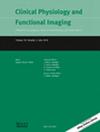Point-of-care β-hydroxybutyrate measurement predicts adequate glucose metabolism suppression in cardiac FDG-PET/CT
Abstract
Aims
The aims of our study were to evaluate whether point-of-care β-hydroxybutyrate (BHB) measurement can be used to identify patients with adequate cardiac glucose metabolism suppression for cardiac [18F]-fluoro-2-deoxy-d-glucose-positron emission tomography with computerized tomography (FDG-PET/CT) and to develop a pretest probability calculator of myocardial suppression using other metabolic factors attainable before imaging.
Methods and Results
We recruited 193 patients with any clinical indication for whole body [18F]-FDG-PET/CT. BHB level was measured with a point-of-care device. Maximal myocardial standardized uptake value using lean body mass (SULmax) was measured from eight circular regions of interest with 1 cm circumference and background from left ventricular blood pool. Correlations SULmax and point-of-care measured BHB were analysed. The ability of BHB test to predict adequate suppression was evaluated with receiver operating characteristic analysis. Liver and spleen attenuation in computed tomography were measured to assess the presence of fatty liver. BHB level correlated with myocardial uptake and, using a cut-off value of 0.35 mmol/L to predict adequate myocardial suppression, we reached specificity of 90% and sensitivity of 56%. Other variables to predict adequate suppression were diabetes, obesity, ketogenic diet and fatty liver. Using information attainable before imaging, we created a pretest probability calculator of inadequate myocardial glucose metabolism suppression. The area under the curve for BHB test alone was 0.802 and was 0.857 for the pretest calculator (p = 0.319).
Conclusions
BHB level measured with a point-of-care device is useful in predicting adequate myocardial glucose metabolism suppression. More detailed assessment of other factors potentially contributing to cardiac metabolism is needed.


 求助内容:
求助内容: 应助结果提醒方式:
应助结果提醒方式:


